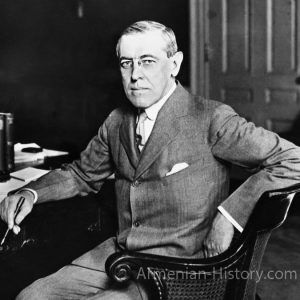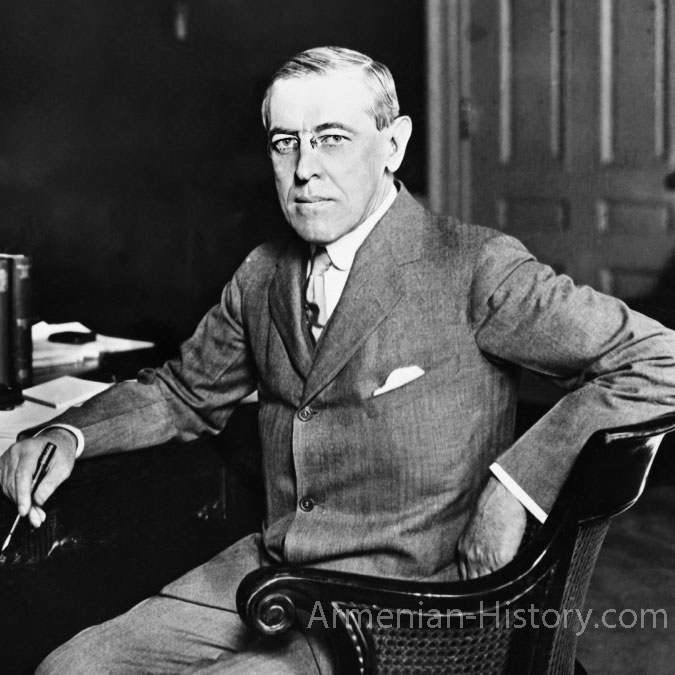The intersection of American idealism and Near Eastern diplomacy reached a critical juncture in the aftermath of World War I. Amid the collapse of the Ottoman Empire and the humanitarian catastrophe inflicted upon the Armenian population, U.S. President Woodrow Wilson emerged as both a symbol of hope and, ultimately, unfulfilled promise. His endorsement of an independent Armenia, and the arbitral award defining its borders, stand as pivotal—albeit unenforced—moments in international law and the modern history of the Armenian people.
The Armenian Question in the Post-Ottoman Context
Between 1915 and 1917, the Armenian Genocide resulted in the death and displacement of over a million Armenians. As the Ottoman Empire disintegrated, the surviving Armenian population and their advocates in Europe and the U.S. sought a path to sovereign statehood and international protection. The short-lived First Republic of Armenia (1918–1920) was diplomatically fragile and militarily exposed. Western powers, particularly Britain and France, favored placing Armenia under an international mandate as envisioned by the League of Nations.

In this environment, American policymakers debated assuming direct responsibility for a mandate over Armenia, in line with the precedent of mandates for other former Ottoman territories, such as Syria and Mesopotamia.
Wilsonian Principles and Armenian Aspirations
President Wilson’s Fourteen Points, delivered in January 1918, reflected a liberal internationalist vision. Point Twelve directly addressed the peoples of the Ottoman Empire, proposing autonomous development for its non-Turkish populations. While vague in application, Armenian leaders interpreted this as tacit American support for independence.

Wilson’s public sympathy for the Armenian cause had earlier foundations. Throughout the war, he maintained contact with relief organizations such as Near East Relief and supported American humanitarian aid to Armenian survivors. His alignment with the League of Nations and advocacy for minority rights placed the Armenian question squarely within his postwar diplomatic agenda.
The Mandate Proposal and Congressional Rejection

On May 24, 1920, President Wilson submitted a formal message to Congress requesting authority to accept a League of Nations mandate over Armenia. In his message, Wilson invoked both humanitarian obligation and moral responsibility, stating:
“The sympathy of our people has been deeply stirred by the sufferings of the Armenians, and many of our fellow citizens have shown their interest and helpfulness in very practical ways. The American people… would no doubt be glad to see the peace of the world further assured by assuming a mandate over the Armenian people” (Congressional Record, 66th Cong., 2nd Sess., 1920).
Despite the appeal, the Senate decisively rejected the mandate on June 1, 1920, by a vote of 52 to 23. The decision was driven by a resurgent isolationism, a reluctance to entangle the U.S. militarily in another conflict, and partisan opposition to Wilson’s internationalist ambitions. Historian Lloyd E. Ambrosius notes that Wilson failed to build the necessary domestic coalition, treating foreign policy as an extension of his moral authority rather than a negotiated consensus.
Wilson’s Arbitral Award and the Treaty of Sèvres
Despite the Senate’s refusal to assume a mandate, the Treaty of Sèvres, signed on August 10, 1920, included a critical role for the U.S. President. Article 89 of the treaty assigned Wilson the task of arbitrating Armenia’s western boundary with Turkey. In response, Wilson commissioned experts to study ethnographic, geographic, and economic data to delineate the new borders.
On November 22, 1920, Wilson submitted his arbitral award. It granted Armenia approximately 40,000 square miles of territory, including Erzurum, Van, Bitlis, and Trabzon provinces—providing access to the Black Sea. The boundary was designed not only for historical justice but for long-term viability. Wilson’s decision, while accepted by the Armenian government, was never recognized or implemented by Turkey or enforced by the Allied powers.
Collapse of the Treaty System and Regional Realities
The diplomatic landscape rapidly deteriorated. By late 1920, the Turkish National Movement led by Mustafa Kemal had already repudiated the Treaty of Sèvres. In December 1920, Armenian forces—exhausted and isolated—were forced to sign the Treaty of Alexandropol, which reversed all territorial gains. The final blow came with the Sovietization of Armenia and the Treaty of Kars (1921), in which Soviet Armenia and the Turkish Republic agreed to a new border, discarding the Wilsonian framework altogether.
The Wilsonian award remains legally unique. As an arbitral decision issued under international treaty authority, it carries the weight of law, yet it lacks enforcement. Scholars such as Rouben Adalian and Richard G. Hovannisian have explored the continued symbolic value of this award in modern Armenian political discourse.
Legacy and Relevance
Although the mandate and award were never realized, Wilson’s engagement with the Armenian question holds enduring significance. First, it represents a high-water mark of U.S. involvement in Armenian affairs and a rare instance in which an American president was given direct international authority. Second, the documents associated with Wilson’s decision continue to serve as legal references in discussions of historical justice and territorial claims.
In contemporary Armenia and the diaspora, the concept of “Wilsonian Armenia” symbolizes a path not taken—a moment when American moral leadership nearly altered the fate of a people.




